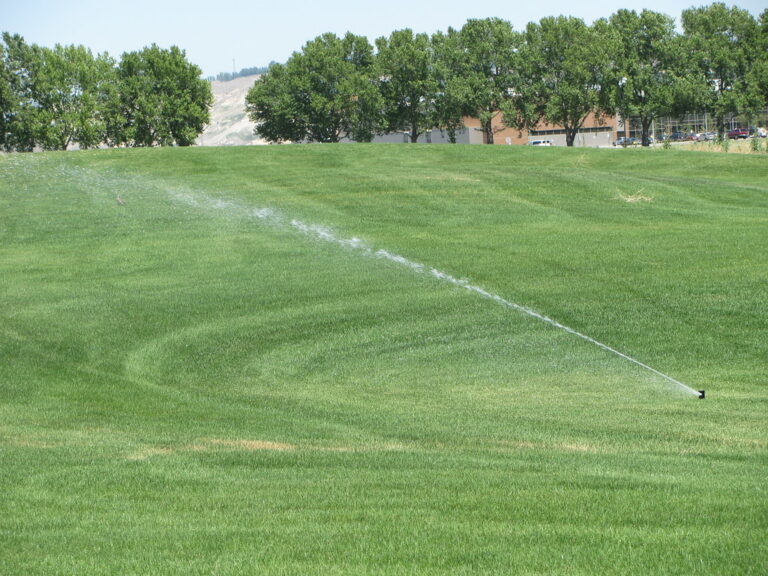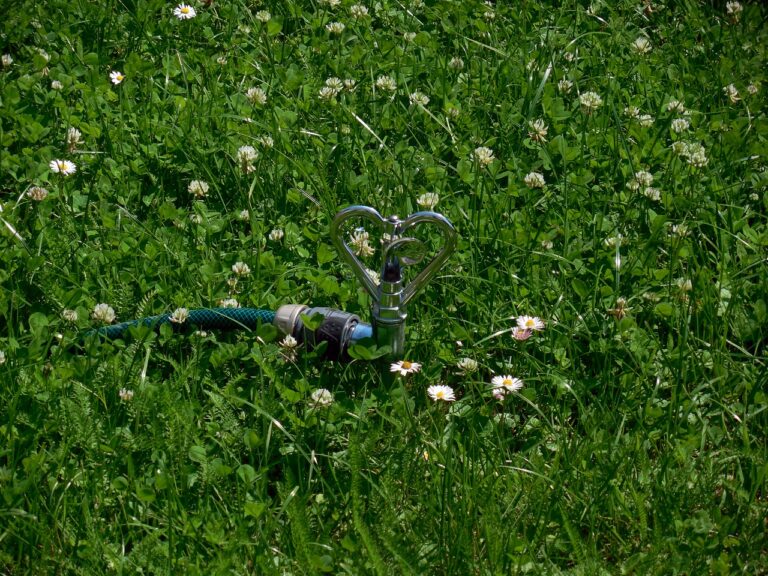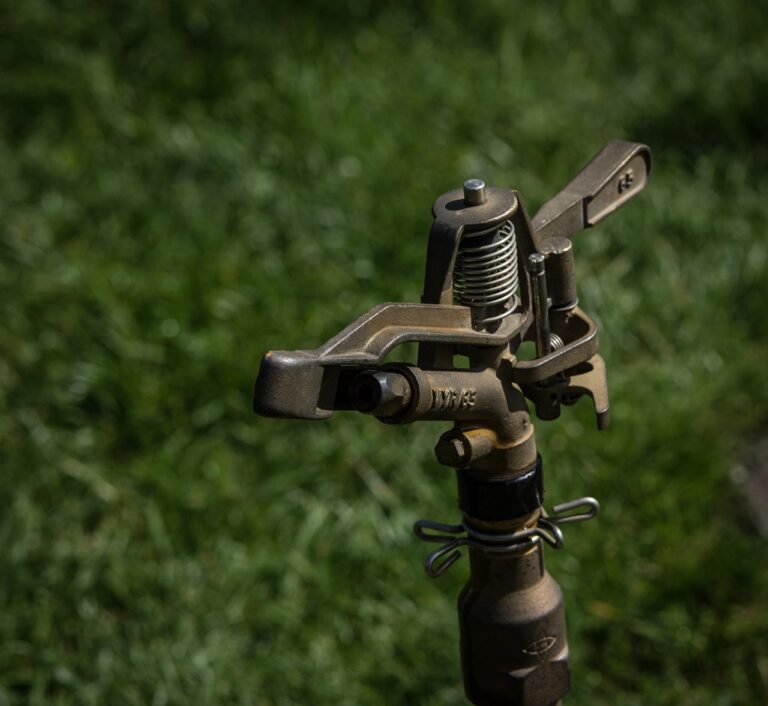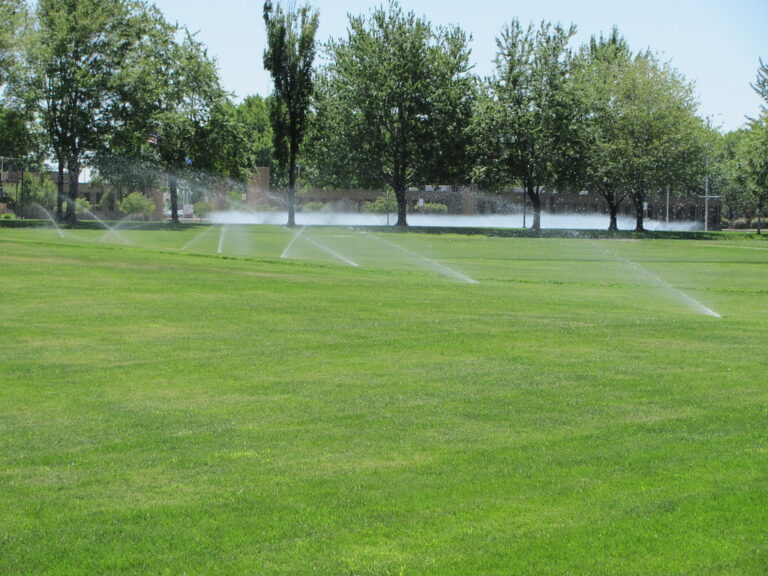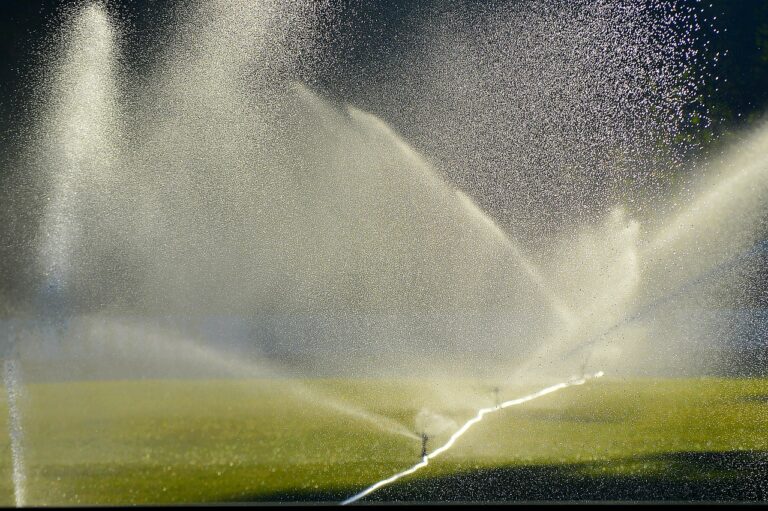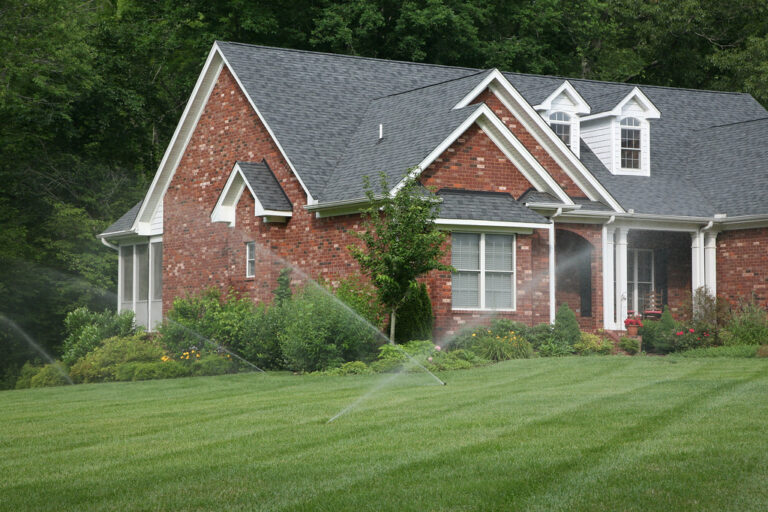Upgrading Your Lawn Irrigation System: Latest Innovations and Smart Technology Integration

Are you tired of spending countless hours manually watering your lawn, only to end up with uneven patches and wasted water? It’s time to upgrade your lawn irrigation system and embrace the latest innovations in smart technology. With the integration of smart sprinkler controllers, you can take control of precision watering, weather-based algorithms, and convenient smartphone app controls.
But with so many options available, how do you choose the best one for your needs? In this blog post, we will explore the latest advancements in smart irrigation systems and provide recommendations for top-performing controllers. Get ready to revolutionize the way you care for your lawn while saving water and enjoying a lush green oasis all year round!
1. Precision Watering
When it comes to watering your lawn, precision is key. Gone are the days of over-watering or under-watering your plants and grass. With smart irrigation systems, you can achieve precision watering like never before. These innovative systems use advanced sensors and algorithms to determine exactly how much water each area of your lawn needs.
By analyzing factors such as soil type, plant type, weather conditions, and evaporation rates, these smart systems ensure that every drop counts. They deliver just the right amount of water at the right time to keep your lawn healthy and lush without wasting any resources. With precision watering, you can say goodbye to brown patches or soggy areas in your yard – it’s all about efficiency and effectiveness!
2. Weather-Based Algorithms
Smart irrigation systems with weather-based algorithms take the guesswork out of watering your lawn. These innovative systems use advanced technology to analyze real-time weather data and adjust watering schedules accordingly. By incorporating local weather information, such as temperature, humidity, and precipitation forecasts, these algorithms ensure that your lawn is only watered when necessary.
Weather-based algorithms also consider factors like evapotranspiration rates and soil moisture levels to optimize watering efficiency. This means that even if Mother Nature decides to surprise you with a sudden rain shower, your smart irrigation system will automatically adjust the watering schedule to avoid overwatering. With weather-based algorithms at work, you can rest assured that your lawn will receive just the right amount of water it needs for healthy growth without wasting a drop!
3. Smartphone App Control
With the latest innovations in lawn irrigation systems, controlling your sprinklers has never been easier. One of the most convenient features is smartphone app control. Gone are the days of manually adjusting timers or running back and forth to turn on or off your sprinklers. Now, with just a few taps on your phone, you can easily manage and monitor your irrigation system from anywhere.
The smartphone app allows you to have complete control over your watering schedule at your fingertips. Whether you’re at work, away on vacation, or simply lounging in the backyard, you can easily adjust settings, start or stop watering cycles, and even check real-time data about water usage. This level of convenience ensures that your lawn receives precisely the right amount of water without any wasted resources. Say goodbye to guesswork and hello to efficient lawn care!
4. Water Usage Monitoring
Water Usage Monitoring is a crucial feature of smart irrigation systems that allows you to keep track of how much water your lawn is receiving. With this innovative technology, you can easily monitor and control the amount of water used for irrigation purposes. By tracking usage patterns, you gain valuable insights into optimizing watering schedules and reducing waste.
By integrating water usage monitoring into your lawn irrigation system, you can ensure that every drop counts. This feature helps prevent over-watering or under-watering by providing real-time data on the amount of water being delivered to your lawn. With this information at your fingertips, you can make informed decisions about adjusting watering schedules and identifying potential issues before they become costly problems.
5. Easy Installation and Use
Installing and using a smart irrigation system has never been easier. With the latest innovations in technology, setting up your new system is a breeze. Gone are the days of complicated installations and confusing instructions.
Thanks to user-friendly interfaces and intuitive designs, you can have your smart sprinkler controller up and running in no time. Whether you’re a tech-savvy homeowner or just starting out with smart home devices, these systems are designed with simplicity in mind. Plus, the easy-to-use smartphone apps make it convenient to control and monitor your irrigation system from anywhere at any time. Upgrade to an effortless installation process and enjoy hassle-free operation for years to come!
Selecting the Best Smart Sprinkler Controller
When it comes to upgrading your lawn irrigation system with smart technology, selecting the right sprinkler controller is crucial. Here are some key factors to consider:
Look for a controller that is WaterSense certified. This certification ensures that the controller meets strict water efficiency standards and can help you save water and money in the long run.
Make sure you know the watering zones of your system. Different areas of your lawn may require different amounts of water, so choose a controller that allows for individual zone control.
Installation is another important consideration. Some controllers may require rewiring or additional equipment, so check if it’s compatible with your current setup before making a purchase.
Consider the controls offered by the sprinkler controller. Look for user-friendly interfaces and options like scheduling flexibility and remote access through smartphone apps.
Remember these tips when selecting your smart sprinkler controller to ensure efficient watering and maximize the benefits of upgrading your lawn irrigation system!
1. WaterSense Certification Is a Must
When upgrading your lawn irrigation system, one of the most important factors to consider is water efficiency. That’s where WaterSense certification comes in. This voluntary program, sponsored by the Environmental Protection Agency (EPA), ensures that products meet strict criteria for water efficiency and performance.
By choosing a sprinkler controller with WaterSense certification, you can be confident that it has been independently tested and proven to reduce water waste without sacrificing the health of your lawn. These controllers use advanced technology to optimize watering schedules based on weather conditions and soil moisture levels. They also provide features like automatic rain shut-off and real-time leak detection to further conserve water.
Investing in a smart sprinkler controller with WaterSense certification not only helps protect our precious water resources, but it can also save you money on your water bill in the long run. Plus, many local utility companies offer rebates or incentives for installing WaterSense-certified devices, making it an even more cost-effective choice for upgrading your lawn irrigation system. So when shopping for a new sprinkler controller, make sure to look for that coveted WaterSense label!
2. Know Your System’s Watering Zones
Knowing your system’s watering zones is essential when upgrading to a smart sprinkler controller. Each zone in your lawn has different watering needs, so understanding them will help you optimize water usage and ensure healthier plants.
By identifying the specific areas of your yard that require more or less water, you can create customized schedules for each zone. This allows you to avoid overwatering or underwatering certain areas, resulting in better plant growth and conservation of water resources. So before selecting a smart irrigation system, take the time to map out your watering zones and consider their individual requirements.
3. Installation Involves Rewiring
When upgrading your lawn irrigation system to a smart sprinkler controller, one important aspect to consider is the installation process. It’s worth noting that installing a smart sprinkler controller involves rewiring your existing system. This means you may need to hire a professional electrician or irrigation specialist to ensure proper installation.
Rewiring can be a complex task as it requires disconnecting and reconnecting wires from your old controller to the new smart controller. This step ensures seamless integration with your existing wiring setup. While it may involve some effort and expertise, the benefits of upgrading to a smart irrigation system make it well worth the investment in time and resources.
By rewiring and installing a smart sprinkler controller, you gain access to advanced features such as app controls, weather-based algorithms, and water usage monitoring. These capabilities allow for precise watering schedules based on real-time data, resulting in efficient water usage and healthier plants. So if you’re ready for an upgrade that brings convenience, efficiency, and environmental sustainability to your lawn care routine, don’t let the rewiring process deter you – just enlist professional help for smooth installation.
4. Consider the Controls
When upgrading your lawn irrigation system, it’s essential to consider the controls of your smart sprinkler controller. The controls play a crucial role in how you interact with and manage your watering schedule. Look for controllers that offer user-friendly interfaces and intuitive navigation. You want a control panel that is easy to understand and navigate, allowing you to make adjustments effortlessly.
Additionally, consider the range of control options available. Some controllers allow you to adjust settings manually or create customized programs based on specific zones or plant types in your yard. Others may even have advanced features like flow sensing capabilities or integration with weather forecasts for automatic adjustments. By considering the controls offered by different smart sprinkler controllers, you can choose one that suits your needs and provides seamless management of your lawn irrigation system without any hassle.
5. Not All Controllers Are Weatherproof
When upgrading your lawn irrigation system, it’s important to consider the weatherproof capabilities of the controllers. While many smart sprinkler controllers are built to withstand outdoor conditions, not all of them offer this feature.
Having a weatherproof controller ensures that it can handle rain, snow, and other harsh elements without getting damaged or malfunctioning. This is especially crucial for those who live in areas with unpredictable weather patterns. So before making a purchase, be sure to check if the controller is specifically designed to be weatherproof for reliable operation and longevity. Protect your investment and keep your lawn looking its best no matter what Mother Nature brings!
Benefits and Advantages of Upgrading to a Smart Irrigation System
Smart irrigation systems offer numerous benefits and advantages for homeowners looking to upgrade their lawn irrigation system. The convenience of app controls allows users to easily manage their sprinkler system from anywhere, making it a breeze to adjust watering schedules or turn off the sprinklers during rainy days.
These systems utilize weather-based algorithms that take into account local weather conditions and forecast data in order to optimize watering schedules. This ensures that your lawn receives just the right amount of water at the appropriate times, saving both water and money. With automatic scheduling capabilities, smart irrigation systems eliminate the need for manual adjustments and provide a set-and-forget operation.
Additionally, upgrading to a smart irrigation system promotes environmental sustainability by reducing water waste. By using precision watering techniques and incorporating real-time weather data, these systems minimize overwatering and prevent under-watering. This not only helps conserve water resources but also lowers utility bills in the long run.
Many smart irrigation controllers now offer voice control integration with popular virtual assistants like Amazon Alexa or Google Assistant. This means you can effortlessly manage your sprinkler system with simple voice commands while multitasking around your home or yard.
By upgrading to a smart irrigation system, homeowners can enjoy convenient app controls, efficient watering based on weather conditions, automated scheduling features for hassle-free operation, significant water savings for both financial and environmental benefits as well as hands-free functionality through voice control integration.
Tips for Upgrading Your Lawn Irrigation System
1. Install a Rain Sensor
Installing a rain sensor for your lawn irrigation system is a smart move that can save you time, money, and water. With a rain sensor in place, your sprinkler system will automatically shut off when it detects rainfall, preventing unnecessary watering and conserving water resources.
Rain sensors work by monitoring the level of moisture in the soil. When they detect that the soil is already wet from rain or sufficient irrigation, they send a signal to the controller to pause watering until conditions improve. This eliminates the need for manual adjustments and ensures that your lawn only receives water when it truly needs it. By installing a rain sensor, you can have peace of mind knowing that you’re doing your part to conserve water while still maintaining a healthy landscape.
2. Upgrade Controllers for Smarter Operation
Upgrading your lawn irrigation system goes beyond just installing new sprinkler heads or adjusting watering schedules. To truly optimize the efficiency and effectiveness of your system, it’s important to upgrade your controllers as well. By investing in smart sprinkler controller technology, you can ensure a smarter operation that maximizes water usage and minimizes waste.
Smart sprinkler controllers offer several features that enhance the overall performance of your irrigation system. With advanced sensors and algorithms, these controllers can monitor real-time weather conditions and adjust watering schedules accordingly. This means that on rainy days, the controller will automatically skip watering to avoid overwatering your lawn. Additionally, smart controllers can take into account factors such as soil moisture levels and plant types to deliver precise amounts of water where it’s needed most.
By upgrading your controllers for smarter operation, you’ll have access to intuitive smartphone apps that allow you to control and monitor your irrigation system from anywhere at any time. Whether you’re at home or away on vacation, you can easily adjust watering schedules or turn off the sprinklers altogether with just a few taps on your phone. This level of convenience ensures that your lawn receives optimal care without requiring constant manual adjustments.
3. Consider Adding Drip Irrigation
Another innovative feature to consider when upgrading your lawn irrigation system is adding drip irrigation. This method delivers water directly to the plants’ roots, reducing evaporation and ensuring efficient water usage. With drip irrigation, you can strategically place small tubes or emitters around your garden beds or planters, allowing for a slow release of water right where it’s needed most.
Drip irrigation is particularly beneficial for areas with plants that have different watering requirements or are located on slopes. It helps prevent wastage by minimizing runoff and targeting specific areas that may need more hydration. By incorporating drip irrigation into your system, you can maximize water conservation while promoting healthier plant growth throughout your landscape.
Conclusion
Upgrading your lawn irrigation system with the latest innovations and smart technology integration can transform the way you water your lawn. Smart sprinkler controllers offer a range of benefits and advantages that make watering more efficient, convenient, and environmentally friendly.
With precision watering capabilities, weather-based algorithms, smartphone app control, and water usage monitoring, you have full control over your irrigation system like never before. These features allow for optimized watering schedules based on real-time weather data and individual zone needs.
When selecting a smart sprinkler controller, it’s important to consider factors such as WaterSense certification, knowledge of your system’s watering zones, rewiring requirements for installation, control options available, and whether or not the controller is weatherproof.

